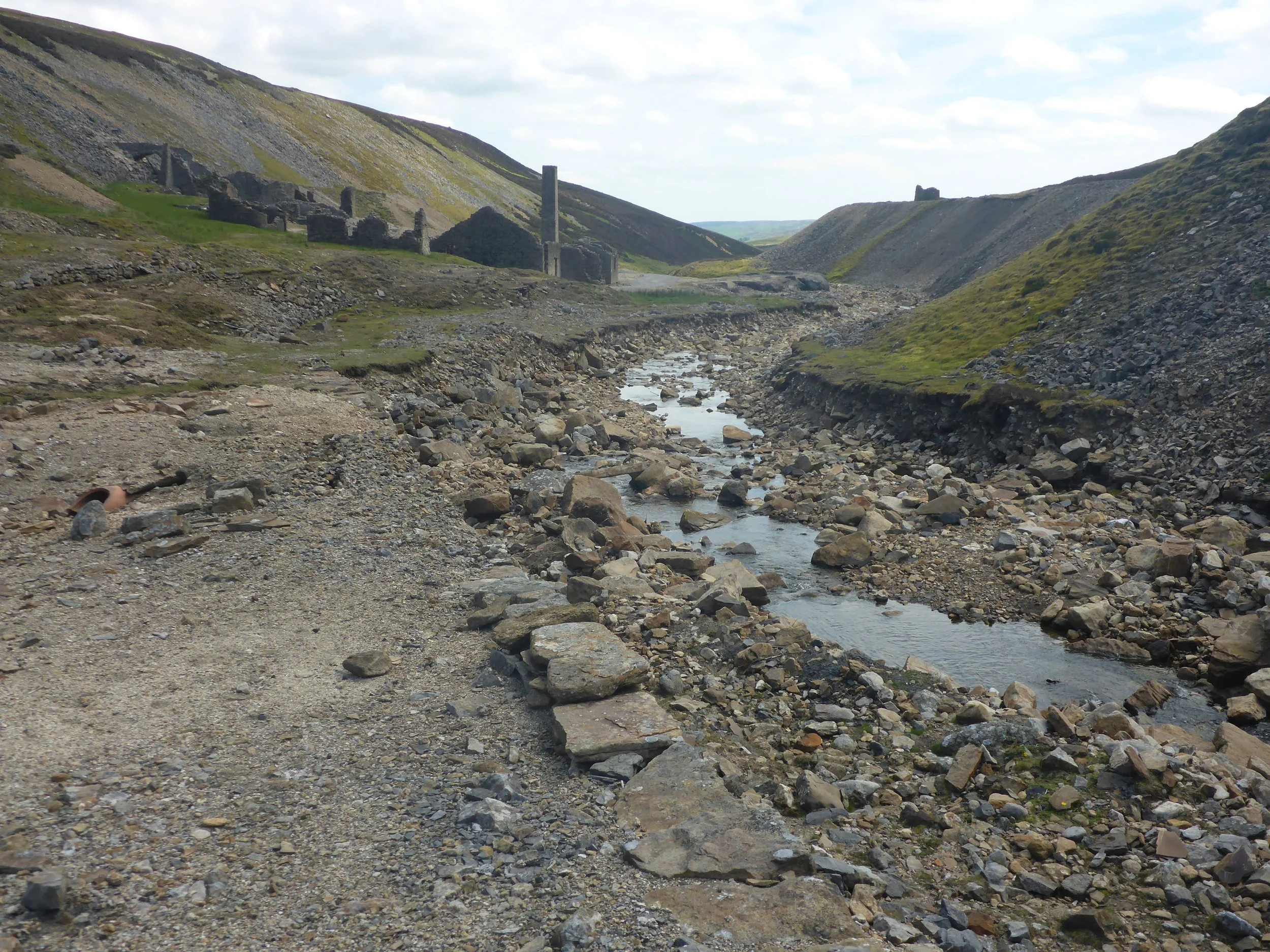Flash Floods in a Changing Landscape:
The Influence of Historical Metal Mining in Upper Swaledale
WEBINAR
25th September 2024 19:00 GMT
by Edwin Baynes (Loughborough University)
Bank erosion and evidence for sediment transport at Old Gang mine, shortly after the July 2019 flash flood.
Abstract
Extreme events, such as floods, can cause significant damage to landscapes leading to widespread erosion and deposition of sediment. In the future, the frequency and magnitude of such events will increase as a result of climate change. Here, we identify the critical controls on sediment export from three contrasting tributary catchments in Upper Swaledale by examining the changes caused by a single high magnitude flash flood event in July 2019. Alongside widespread damage to industrial mining heritage and local roads, the flood had contrasting geomorphic impacts on each catchment, driven by local, reach-scale, variability in the river network. The geomorphic conditions in one of our study catchments allowed the flood to generate the equivalent of around 100 times the typical annual erosion in a very short period of time. Our results are important for allowing the identification of catchments potentially at risk of experiencing dramatic changes during extreme events in the future, due to their catchment characteristics. Determining the patterns of sediment erosion in these catchments is particularly critical due to the metal mining history of this landscape, with the potential risk of mobilising and transport contaminated legacy sediments in the wider environment downstream.
Biography
Dr Edwin Baynes is a Senior Lecturer in Physical Geography at Loughborough University, where his research seeks to understand and quantify the processes that shape the Earth’s surface, in particular the impact and legacy of Extreme Events. He has ongoing field projects studying erosion processes in mountain and upland landscapes in the Pennines, Yorkshire Dales and New Zealand, and extensively uses analogue flume experiments to simulate the response of landscapes to perturbations under controlled conditions. Before joining Loughborough, he studied at Durham and Edinburgh Universities before working as a researcher at the Universities of Hull, Rennes (France), and Auckland (New Zealand).


